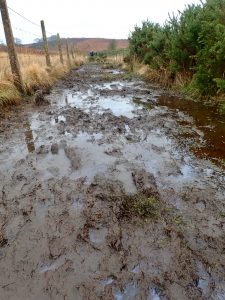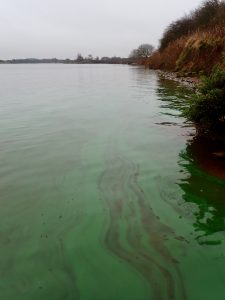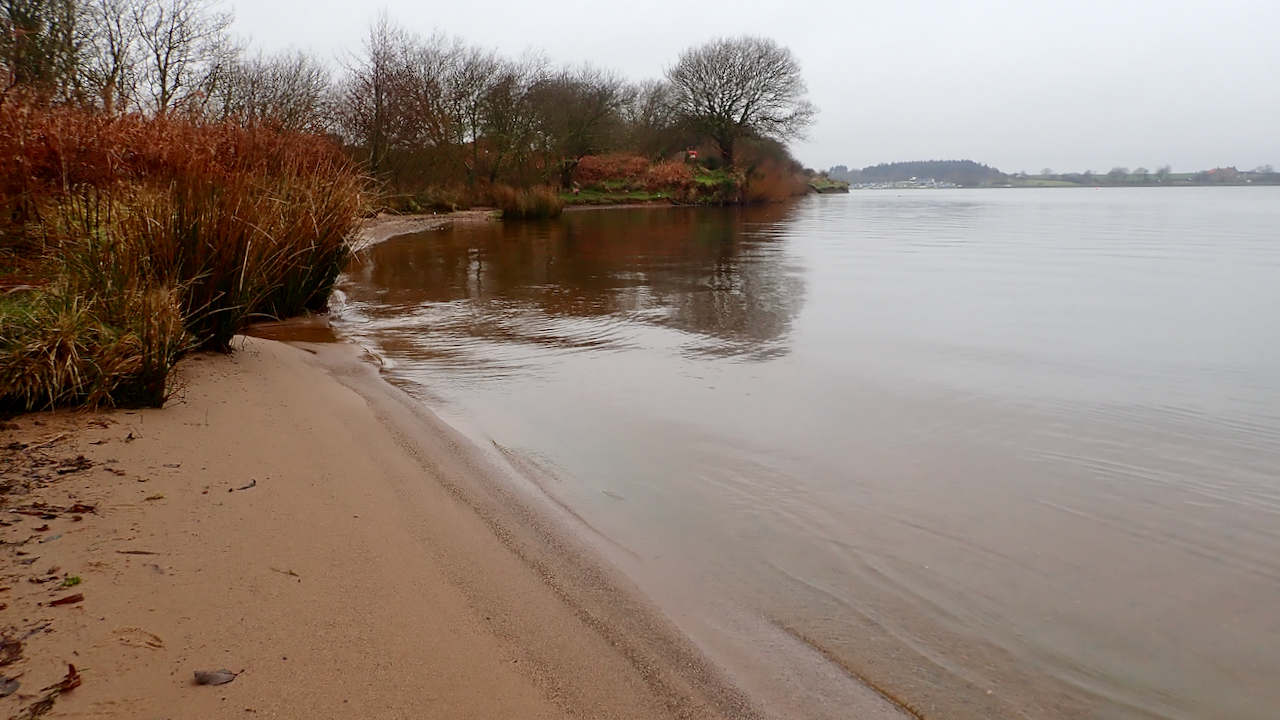
No photo of the rising sun on this Winter Solstice, but one of Scaling Dam which has the distinction of being half in Tier 3 and half in Tier 2. There was not much activity. Just the odd angler. All watersports are in their winter hibernation.
The state of the “Circular Walk” around the reservoir was a bit bashy, a Yorkshire expression for muddy. Ok, there were signs up warning us. Project Fear. The problem is exasperated by the practice of enclosing the path by fencing on both sides. This leaves no room for walkers to step around when the path becomes founderous, an ancient right, although I guess such a right won’t exist here as it’s a permissive path by the kindness of Northumbrian Water.
About halfway along the southern shore, there was evidence of blue-green algae in the water which has caused consternation amongst users during the summer.
It is usually associated with the warmer temperatures of summer so it is surprising it is still around at the Winter Solstice.

According to the Environment Agency:
“Blue Green Algae is a completely natural summertime occurrence, however it can be toxic and as such, users of these lakes must remain cautious. As well as having a negative effect on the appearance, quality and use of the water, it can also move around – you could see it one day, but it may have moved the next.”
The BBC says it can be fatal for animals if left untreated and can cause rashes and illness to humans.
The algae are cyanobacteria and it is generally believed blooms occur due to an excess of nutrients in the water but there may be other factors such as climate change, pollution or some other sort of environmental disturbance. As the EA says it is naturally occurring but an excess can smother plants reducing the oxygen level in the water, which can affect the fish population.
One obvious source of excess nutrients is from the faeces of the numerous geese and wildfowl which take advantage of the reservoir, the western end of which is a nature reserve.
But there is one other possible cause which I admit I have found no direct evidence. As said, the algae is a natural occurrence and therefore part of the ecosystem providing food for creatures higher up the food chain.
Now, a few years ago, Leeds University did a research project into the Effects of Moorland Burning on the Ecohydrology of River Basins or EMBER. In their report summary, they conclude:
“Macroinvertebrates play a vital role in aquatic food webs by feeding on algae, microbes and detritus at the base of food chains before they themselves are consumed by birds, fish and amphibians. The research found that river macroinvertebrate population diversity was reduced in burned sites.”
So the algae provide a food source for macroinvertebrates which are depleted due to the rotational burning of intensively managed heather moorland. It just so happens the catchment of Scaling Dam reservoir is almost entirely heather moorland.
And it also just so happens that the bloom in the photo was at the inlet of a small stream, but enough said. Perhaps I’m just putting two and two together and coming up with five.

Leave a Reply